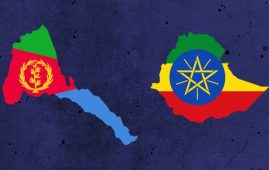The United Nations is poised to declare a famine in parts of Somalia, the US-based media CBC reported about 12 hours ago. It claimed:
The UN has not yet declared the current food crisis a famine, but Brian Stewart, a distinguished senior fellow at the Munk School for Global Affairs at the University of Toronto, told CBC News that the UN is expected to declare a famine in some areas of Somalia within 48 hours.
The FEWS NET(Family Early Warning System Network) website, maintained by the USAID, currently classifies parts of the Horn of Africa at the third and fourth levels of food insecurity, that is, ‘crisis’ and ‘emergency, respectively.
The fifth and worst stage is "Famine/catastrophe". If the news turns out to be a correct one, it would be the first famine to be declared in the Horn of Africa since the 1984-85 famine that left hundreds of thousands people dead in Ethiopia.
Famine is defined, based on the Integrated Food Security Phase Classification’s (IPC) system adopted by the UN and several other Humanitarian agencies, as follows:
Summary Description
Household group experiences short term instability; and
Household group has near complete lack of food and/or other basic needs where starvation, death, and destitution are evidentHazards & Vulnerability
Effects of hazards and vulnerability causing short-term instability resulting in near complete collapse of livelihood assets and/or massive food consumption deficitsFood Availability, Access, Utilization, Stability
Effectively no availability, access, and utilization; volatileHuman Water Requirement from Improved Source: Water: < 4 liters pppd, unstable (pppd-per person per day)
Food Consumption (Quantity & Quality) –
Quantity & Quantity: Effectively complete gap
HDDS (household dietary diversity score): Extreme dietary deficit of both micro and macronutrients
FCS (food consumption scale): [Below] poor consumption
HHS (household hunger scale;) (: Severe (6)
CSI (coping strategies index ): Far> reference
HEA (household economy analysis): Survival Deficit>20%Livelihood Change (Assets & Strategies)
Livelihood: Near complete collapseCoping Strategies: Effectively no ability to cope
Nutrition (Due to Food Deficits)
Presence of several severely acutely malnourished children and/or adolescents/adultsDeath is evident in most households
Wasting Rate: > 30% -AND/OR- oedema
BMI = body mass indexBMI < 18.5 Rates: far> 40%Death Rate
CDR (crude death rate): > 2/10,000/day (children death rate)
U5DR (under five crude death rate): > 4/10,000/day(under 5 age children death rate).
***********************
Update: from – Food Security and Nutrition Analysis Unit (FSNAU) – Somalia
Famine Declared in Two Regions of Somalia
Nairobi, July 20 – Evidence of severely reduced food access, acute malnutrition, and crude mortality indicates that a famine is currently ongoing in two areas of southern Somalia: the Bakool agro-pastoral livelihood zones and all areas of Lower Shabelle. This crisis represents the most serious food insecurity situation in the world today, in terms of both scale and severity. Current humanitarian response is inadequate to meet emergency needs. Assuming current levels of response, evidence suggests that famine across all regions of the south will occur in the coming 1-2 months. A massive multi-sectoral response is critical to prevent additional deaths and total livelihood/social collapse and most immediately, interventions to improve food access and to address health/nutrition issues are needed.
The current crisis in southern Somalia is driven by a combination of factors:-
- The total failure of the October‐December Deyr rains (secondary season) and the poor performance of the April‐June Gu rains (primary season) have resulted in crop failure, reduced labor demand, poor livestock body conditions, and excess animal mortality
- Local cereal prices across the south are far above average, more than 2 to 3 times 2010 prices in some areas, and continue to rise. As a result, both livestock to cereal and wage to cereal terms of trade have deteriorated substantially. Across all livelihoods, poor households (~30 percent of the population) are unable to meet basic food needs and have limited ability to cope with these food deficits
- During July, FSNAU conducted 17 representative nutrition and mortality surveys across southern Somalia; results are available for 11 surveys. The prevalence of acute malnutrition exceeds 20 percent in all areas and is higher than 38 percent (with severe acute malnutrition higher than 14 percent) in 9 of the 11 survey areas. The highest recorded levels of acute malnutrition are in Bay, Bakool, and Gedo (agro-pastoral) where the GAM prevalence exceeds 50 percent. The U.S. Centers for Disease Control (CDC) has verified these findings
- Population‐wide death rates are above the famine threshold (2/10,000/day) in two areas (Bakool agro-pastoral, and all areas of Lower Shabelle) and are elevated across the south. Under‐5 death rates are higher than 4/10,000/day in all areas of the south where data is available, peaking at 13‐20/10,000/day in riverine and agro-pastoral areas of Lower Shabelle. Tens of thousands of people have died in the past three months.






